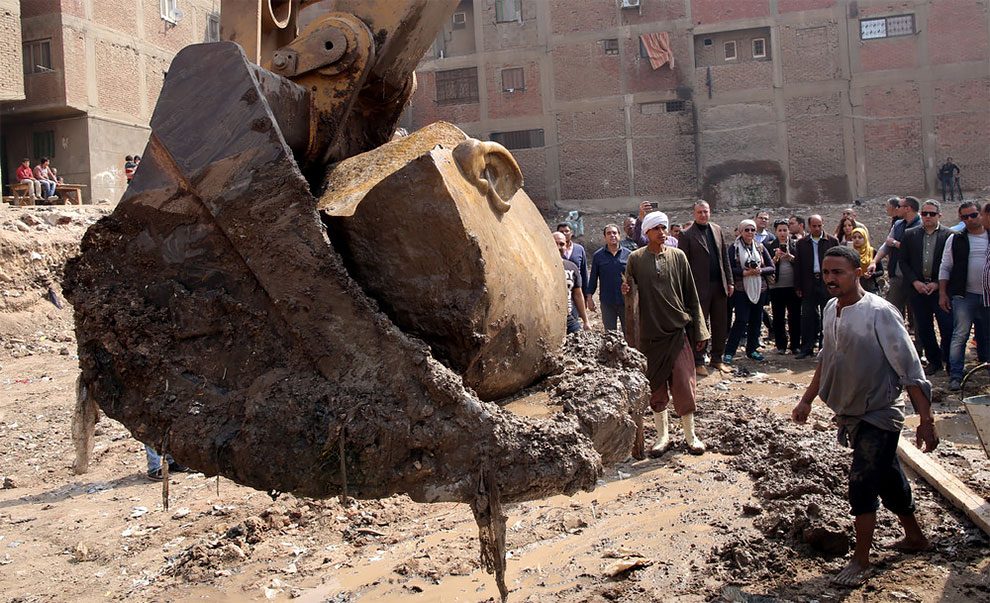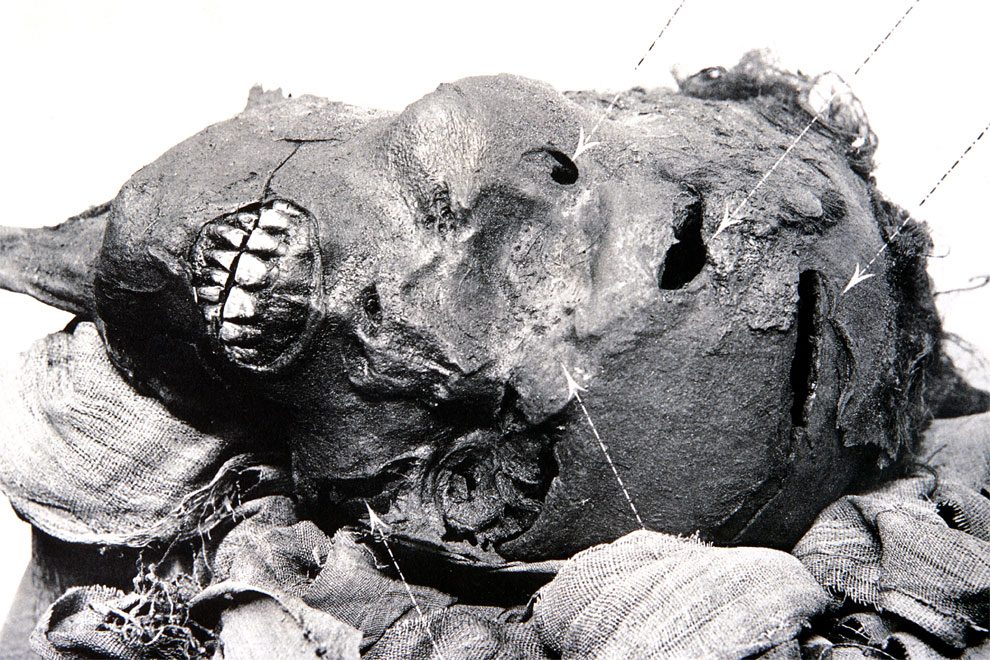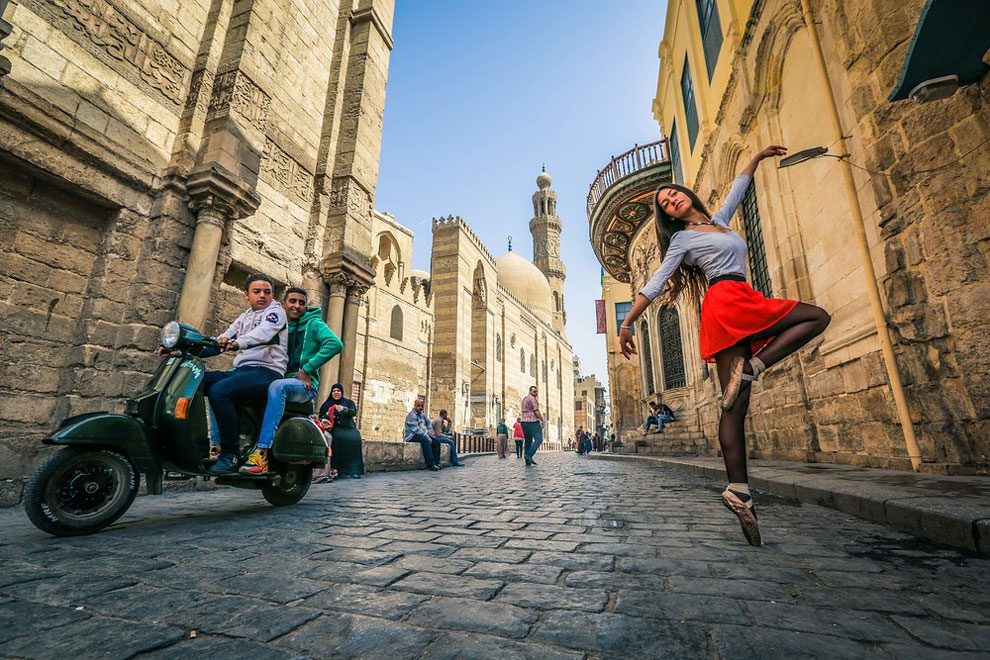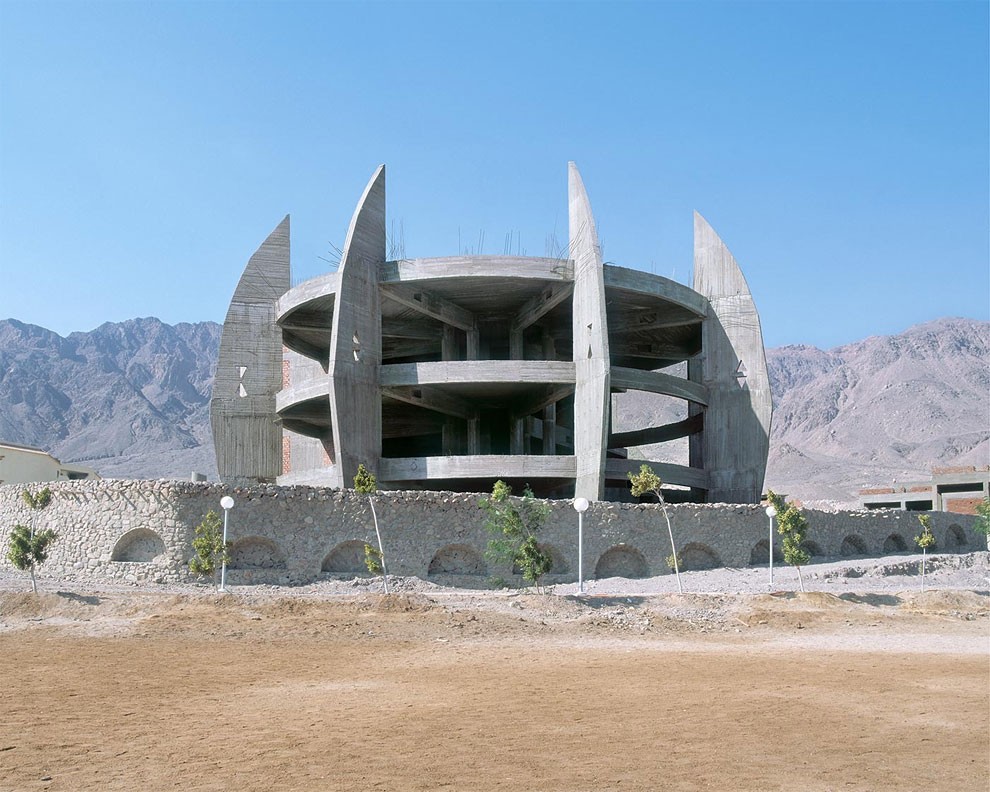A Giant Ancient Egyptian Statues Unearthed

Egyptian workers lift with an excavator parts of a statue for restoration after it was unearthed at Souq al-Khamis district, at al-Matareya area, Cairo, Egypt, 09 March 2017. According to the Ministry of Antiquities, a German-Egyptian archaeological mission found in parts two 19th dynasty royal statues in the vicinity of King Ramses II temple in ancient Heliopolis. The first is an 80cm tall bust of King Seti II carved in limestone, while the second is eight meters tall carved in quartzite. There were no engravings on the latter, however discovering it at the entrance of King Ramses II temple suggests that it could belong to him. (Photo by Khaled Elfiqi/EPA) Continue reading »
Egyptian Mummies: Exploring Ancient Lives

Patrick Landmann/Cairo Museum/Getty Images
Seqenenre Tao II, (also called Sekenenra Taa) at Cairo Museum, Egypt. The pharaoh of the 17th dynasty was killed on the field of battle. The image shows the marks from the axe blow and the two spear thrusts that brought about his death. Continue reading »
Photographer Mohamed Taher Documents Egyptian Dancers Making The Streets Of Cairo Their Stage
In his series “Ballerinas of Cairo”, photographer Mohamed Taher documents Egyptian dancers making the city streets their stage – pirouetting, leaping and posing their way through their country’s sprawling capital. The photos are, at first glance, stunning snapshots of a city’s vibrant culture in motion. But considering the dangers Egyptian women face for roaming these same streets on a daily basis, their impact is far deeper. Sexual harassment continues to present not just a possibility but a terrifying reality in present-day Egypt. A 2013 United Nations report calculated that 99.3 percent of women in the country have experienced sеxual harassment on the streets, a problem that’s sparked initiatives giving women a way to fight back. The violence is rooted in an extreme conservative perspective encouraging women to stay in the home. Continue reading »
Abandoned Hotels In The Egyptian Desert May As Well Be On Another Planet
The word ruins ordinarily conveys a connotation of scarcely delineated brick walls and rubble dating back hundreds if not thousands of years, but the work of German artists Sabine Haubitz and Stefanie Zoche serves as a powerful reminder that unfortunate events, especially economic ones, can easily create ruins of much more recent vintage almost anywhere. Continue reading »
Huge Pharaonic Statues Unveiled in Egyptian Temple City
Archaeologists on Sunday unveiled two colossal statues of Pharaoh Amenhotep III in Egypt’s famed temple city of Luxor, adding to an existing pair of world-renowned tourist attractions. The two monoliths in red quartzite were raised at what European and Egyptian archaeologists said were their original sites in the funerary temple of the king, on the west bank of the Nile.
The temple is already famous for its existing 3,400-year-old Memnon colossi – twin statues of Amenhotep III whose reign, archaeologists say, marked the political and cultural zenith of ancient Egyptian civilization. “The world until now knew two Memnon colossi, but from today it will know four colossi of Amenhotep III”, said German-Armenian archaeologist Hourig Sourouzian, who heads the project to conserve the Amenhotep III temple.
The existing two statues, both showing the pharaoh seated, are known across the globe. The two restored additions have weathered severe damage for centuries, Sourouzian said. “The statues had lain in pieces for centuries in the fields, damaged by destructive forces of nature like earthquakes, and later by irrigation water, salt, encroachment and vandalism”, she said as behind her excavators and local villagers washed pieces of artifacts and statues that have been unearthed over the past months.

Tourists and journalists stand next to a newly displayed statue of pharaoh Amenhotep III and his wife Tiye (Down) in Egypt’s temple city of Luxor on March 23, 2014. Two colossal statues of pharaoh Amenhotep III were unveiled by archaeologists today in their original sites in the funerary temple of the king, on the west bank of the Nile in Luxor, adding to the existing two famous ancient Memnon colossi. (Photo by Khaled Desouki/AFP Photo) Continue reading »



